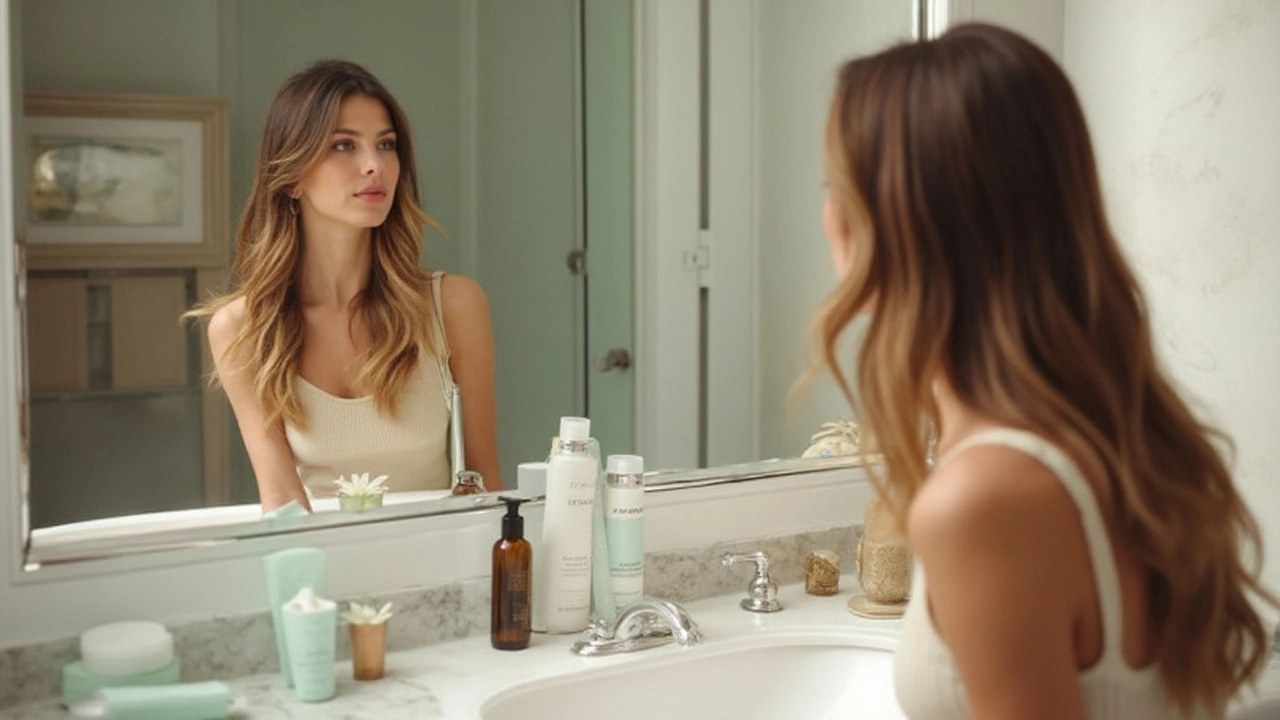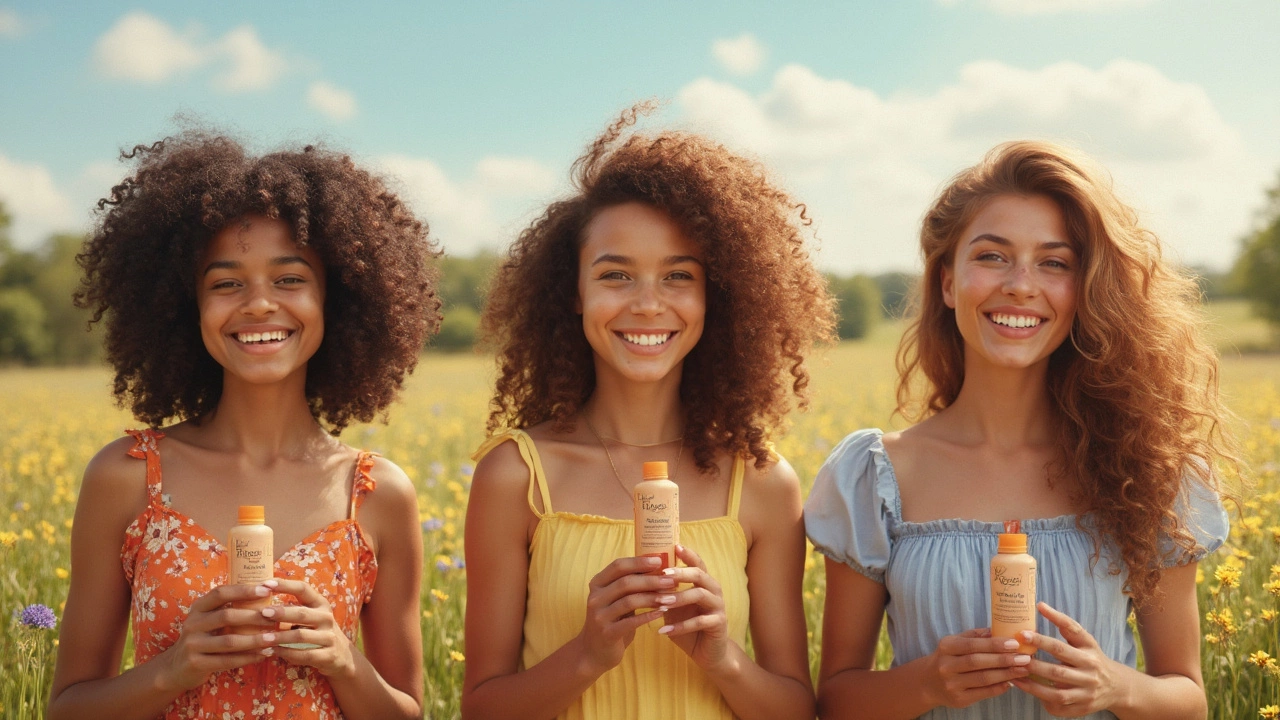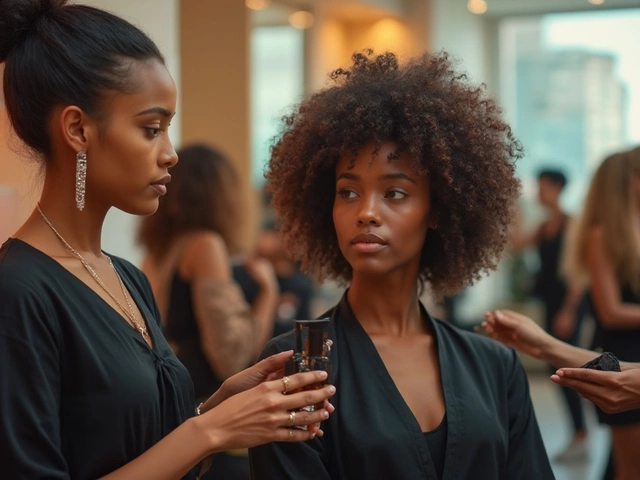Standing in the hair care aisle can make you feel like you need a science degree. There are a million bottles, all promising miracles. The truth is, picking hair products isn’t that mysterious once you know what your hair actually needs. For example, did you know that most people use the wrong shampoo for their scalp type, not just their hair type?
If your hair is dry and frizzy, creamy shampoos and deep conditioners usually work best. But if you have fine or oily hair, you might need lighter, clear formulas that clean well without piling on buildup. It isn’t just about picking what smells nice; choosing the right product makes the difference between a frizzy mess and those good hair days everyone wants.
- Matching Products to Hair Needs
- Shampoo: Cleanse Without Stripping
- Conditioner: Moisture and Protection
- Masks and Oils: Targeted Treatments
- Tips for Building the Perfect Hair Routine
Matching Products to Hair Needs
Grabbing what your best friend uses or the latest influencer’s favorite rarely works, because hair care isn’t one-size-fits-all. The fastest way to waste money on hair care is shopping blind. So, the starting point is figuring out your hair type and scalp needs, then matching your products to both.
Here’s the lowdown: if your scalp gets oily quickly, but your ends are dry, you’ll want a lightweight shampoo for your roots and a richer conditioner for your lengths. If your hair gets flat easily, heavy formulas will only make things worse. For thick or curly hair, skipping rich masks and oils is basically skipping out on moisture your strands crave. According to data from a 2023 hair science survey, about 66% of people with curly hair feel their products don’t moisturize enough—mainly because they aren’t picking formulas meant for curls.
Here’s a cheat sheet to get you started:
- Fine or oily hair: Lightweight, clear shampoos, and avoid super thick oils or masks.
- Dry or damaged hair: Hydrating conditioners, creamy hair masks, and leave-in oils.
- Curly or coarse hair: Sulfate-free cleansers, deep conditioners, and regular use of hair oils.
- Color-treated hair: Products labeled as color-safe, and always a gentle, low-sulfate shampoo.
Don’t forget: your scalp is skin. If it’s itchy or flaky, swap harsh cleansers for those with calming ingredients like tea tree or salicylic acid. A quick scan of the back label can really save you from future hair drama.
| Hair Type | Best Product Type | What to Avoid |
|---|---|---|
| Fine/oily | Clear light shampoos, foam conditioners | Heavy masks, thick oils |
| Dry/damaged | Creamy conditioners & hair masks | Clarifying shampoos |
| Curly/coarse | Sulfate-free, hydrating products | Drying alcohols |
So before you buy, give your hair and scalp a minute of honest attention. The right hair products are the ones that work with your hair, not against it.
Shampoo: Cleanse Without Stripping
Ever feel like your hair gets super squeaky after washing, but it just ends up dryer or frizzier the next day? That’s a big sign your shampoo might be too harsh. The main job of shampoo is to clean your scalp and hair, getting rid of oil and product build-up. The trick is picking one that does this without overdoing it and leaving your hair thirsty.
One fast fact: many drugstore shampoos use strong cleansing agents, called sulfates—like sodium lauryl sulfate. These work well for super oily hair, but if your hair is colored, curly, or dry, they can strip out the good oils and make every hair problem worse. Sulfate-free shampoos are a safer bet for most folks, especially if you wash your hair more than twice a week.
Check the first few ingredients on the bottle. If you see gentle cleansers like coco-glucoside, decyl glucoside, or even sodium cocoyl isethionate, that’s good news for your scalp and strands. For color-treated hair, always go for a formula labeled "color-safe" because it won’t cause your dye to fade after just a few washes.
- For oily hair: Look for clear, lightweight shampoo with labels like “clarifying” or “balancing.” Don’t wash daily unless you really need it, because this can make your scalp produce even more oil.
- For dry or curly hair: Creamy or moisturizing shampoos, sulfate-free, with ingredients like argan oil or shea butter, help lock in moisture.
- For sensitive scalps: Hypoallergenic and fragrance-free options keep things calm. Tea tree or aloe vera-infused formulas soothe itchiness.
Here’s a quick look at how often people typically shampoo:
| Hair Type | Suggested Shampoo Frequency |
|---|---|
| Oily | Every other day |
| Normal | 2–3 times a week |
| Dry/Curly | Once or twice a week |
| Color-treated | Once to twice a week |
Don’t forget, double-cleansing (washing your hair twice in a row) is helpful if you use a lot of styling products, but if you find your hair’s getting brittle, it’s time to scale back. Find the balance, and your hair will actually look cleaner, feel softer, and stay healthier long term.

Conditioner: Moisture and Protection
If you skip conditioner after shampoo, you’re missing out on serious hair benefits. Conditioner isn’t just for people with dry or curly hair—every hair type needs a boost of moisture and protection. When you shampoo, you lift away oils and dirt, but you also strip away some of the natural stuff that keeps your hair healthy. Conditioner brings that moisture back, smooths the cuticle, and helps defend against damage from heat, sun, and even brushing.
Here’s why the right hair care products matter: using conditioner regularly lowers breakage rates by sealing split ends and making hair easier to detangle. According to a 2023 consumer study, 76% of people who switched from no conditioner to daily conditioner noticed softer, less frizzy hair in three weeks.
Picking a conditioner that's right for your hair type is key. Check out these basics:
- Fine or oily hair: Go for lightweight or "volumizing" conditioners and only apply from mid-length to ends. Steer clear of thick, heavy products unless your hair’s super dry at the tips.
- Thick/dry/coarse hair: Creamy, rich conditioners work best. Look for ingredients like shea butter, coconut oil, or argan oil. Don’t be shy about using them root to tip if your scalp is dry, too.
- Color-treated hair: Use conditioners marked “color-safe”—they’re less likely to strip color and usually have proteins for extra protection.
- Curly hair: Hydration is everything. Moisturizing conditioners, often with aloe, jojoba, or glycerin, help define curls and reduce frizz.
And here’s a quick tip: leave your conditioner on for 2-3 minutes before rinsing to give those good ingredients time to do their thing. Some people even use a wide-tooth comb in the shower to make sure the product coats every strand.
If you’re ever confused by the long ingredient list, scan for these stars: panthenol for shine, keratin for repair, and silicone (dimethicone) to help with slip and frizz. Just remember, if you have super fine hair, too much silicone may weigh it down, so you might want to use those less often.
Masks and Oils: Targeted Treatments
When your regular hair care routine just isn’t enough, masks and oils step in to rescue your hair. They’re like a power-up for your strands, especially if you’re dealing with dryness, split ends, or breakage. While conditioner smooths and hydrates on the surface, masks go deeper, fixing damage and giving long-lasting moisture.
Let’s talk masks first. Hair masks usually stay on for at least 10-20 minutes, giving ingredients like keratin, proteins, and natural oils the time to work their magic. If you spend a lot of time using hot tools or you color your hair, using a mask once a week can seriously help. Look for masks with shea butter or avocado oil for dry hair, or go for lightweight protein masks if you have limp, fine hair.
Oils are a whole different game. The right ones add shine, tame frizz, and seal in moisture without weighing hair down—if you pick wisely. Argan oil is popular for a reason: it’s full of fatty acids and vitamin E, works on almost any hair type, and doesn’t leave hair greasy if used in small amounts. Coconut oil is great for thick, curly hair but can be too heavy for finer textures. Jojoba oil is the lightweight pick for thin or oily hair—plus, it’s closest to your scalp’s natural oils.
- For deep conditioning, apply a mask after shampooing and leave it on while you do something else, like scrolling your phone or watching TV.
- Use just a pea-sized drop of oil for your ends. If you use too much, you can end up with greasy hair fast.
- Don’t use heavy masks or oils too close to your scalp if you have fine or oily hair—keep things focused on your ends and damaged areas.
Not sure how much of a difference masks and oils can make? In a consumer survey in 2024, 77% of people who used a hair mask weekly for two months noticed less breakage and fewer split ends. Routine matters—but using the right targeted treatments will get you faster, better results than stacking on more everyday hair products.

Tips for Building the Perfect Hair Routine
If you want healthier, stronger hair, your daily habits matter more than you think. It’s not about piling on products—it’s about using the hair care basics the right way. Here’s how to set up a routine that actually works, without wasting money or time.
- Start with your wash schedule. Most people overwash their hair. Unless you have very oily hair or sweat a lot, washing two or three times a week is usually enough. Too much washing strips natural oils and leads to dryness.
- Pick the right shampoo and conditioner for your hair type. Cleansing with the right shampoo makes a bigger impact than you’d think. For oily scalps, try clarifying shampoos once a week. For dry hair, go for hydrating or sulfate-free formulas. Always follow with a conditioner that matches your hair needs—hydrating for dryness, lightweight for limp or fine hair.
- Don’t skip deep treatments. Use a hair mask or nourishing oil at least once a week. They help repair damage and lock in moisture. Apply on damp hair from mid-length to ends for best results, and don’t coat your roots unless you have a really dry scalp.
- Protect from heat and the environment. Always use a heat protectant if you’re blow-drying, ironing, or curling your hair. UV sprays and leave-in conditioners can help too, especially if you’re outside a lot. Heat is a top reason for split ends and dryness.
- Pay attention to buildup. Even the best hair products can build up over time. Once or twice a month, use a clarifying shampoo or an apple cider vinegar rinse to reboot your strands—this helps shampoos and conditioners work better and gives you more shine.
| Step | How Often |
|---|---|
| Shampoo + Conditioner | 2-3 times per week |
| Deep Conditioning/Mask | 1 time per week |
| Clarifying Treatment | 1-2 times per month |
A good hair care routine doesn’t need a ton of expensive products. What matters is using each product with a real purpose. A little effort goes further than chasing the latest trends when it comes to real hair care results.


